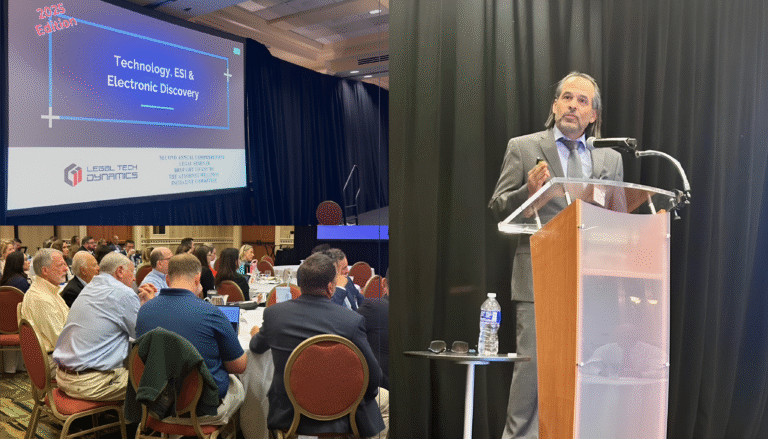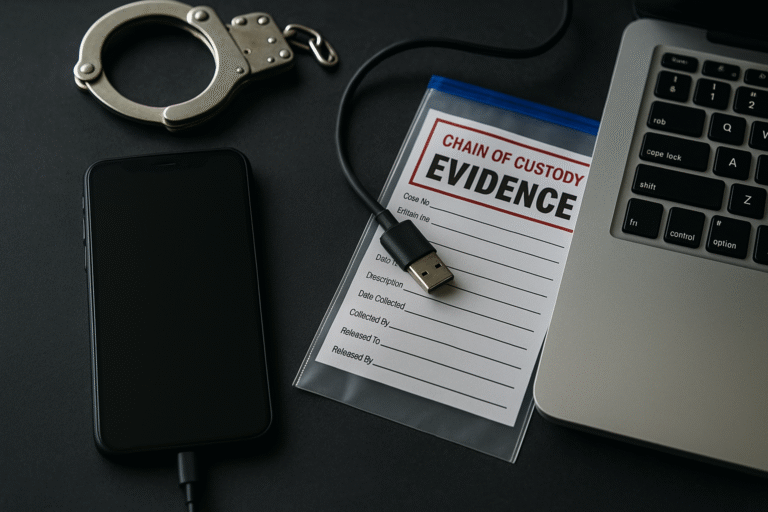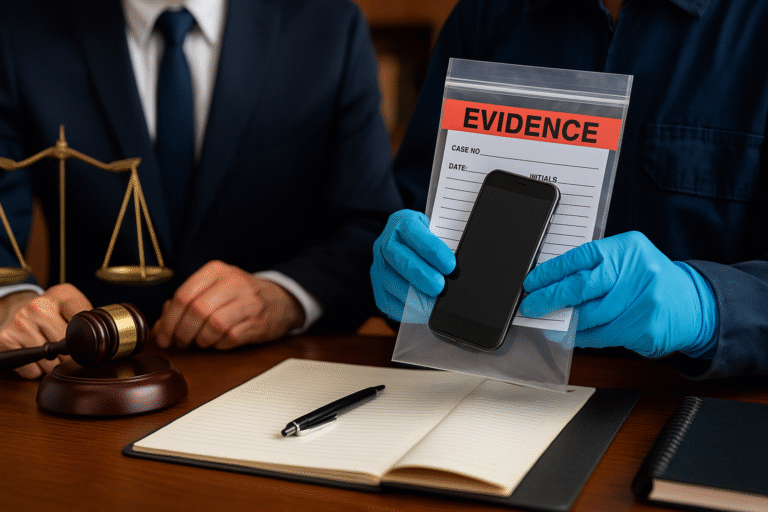By Carlos A. Baradat, JD | Legal Tech Dynamics
The modern courtroom has become a battleground where digital evidence plays a pivotal role in determining the outcome of a case. However, the power of digital evidence hinges not just on its existence but on how it is preserved and handled. Mishandling or failing to preserve electronic data can lead to claims of spoliation—destroying or altering evidence, whether intentionally or inadvertently.
To protect your case and ensure the admissibility of critical evidence, it’s essential to understand the importance of preservation, how forensic imaging safeguards data integrity, and what steps to take when data tampering or deletion is suspected.
The Importance of Preserving Digital Evidence
Preserving digital evidence is more than just a technical requirement; it is a legal and ethical obligation. Courts are increasingly holding attorneys and their clients accountable for the mishandling of digital information, whether it’s a deleted email, altered metadata, or an overwritten file. Spoliation can lead to severe consequences, including:
- Adverse Inferences: Judges may instruct juries to assume the missing evidence would have been unfavorable to the spoliating party.
- Sanctions: Courts can impose monetary fines, dismiss claims, or even default judgments.
- Reputational Damage: Mishandling evidence undermines the credibility of both attorneys and their clients.
To avoid these pitfalls, digital evidence must be preserved at the earliest opportunity, especially in cases involving electronically stored information (ESI) like emails, text messages, or cloud-stored files.
Forensic Imaging: The Key to Integrity and Admissibility
Forensic imaging is a cornerstone of digital evidence preservation. This process involves creating an exact, bit-for-bit copy of a device’s storage, capturing every piece of data, including hidden or deleted files and metadata. Here’s why forensic imaging is critical:
- Data Integrity: Forensic imaging ensures that the original data remains untouched and unaltered, preserving its authenticity. This is vital for maintaining the chain of custody.
- Admissibility in Court: Courts demand a high standard of proof when it comes to digital evidence. Forensic imaging provides the necessary documentation and verification to prove that the evidence is accurate and reliable.
- Comprehensive Analysis: A forensic image captures not only the visible data but also unallocated space, system logs, and remnants of deleted files. These details can uncover crucial evidence in a case.
Without proper imaging, even well-intentioned efforts to access evidence can lead to inadvertent spoliation. For example, opening a file on a hard drive can modify its metadata, jeopardizing its integrity and admissibility.
Responding to Suspected Data Tampering or Deletion
When a client suspects that digital evidence has been tampered with or deleted, time is of the essence. Here are practical steps attorneys should take to safeguard the case:
- Engage a Digital Forensics Expert Immediately
The first step is to involve a certified forensic examiner who can assess the extent of potential tampering or deletion. Experts can analyze devices, retrieve deleted data, and verify whether evidence has been altered. - Issue a Litigation Hold
Notify all parties involved to suspend routine data destruction processes, such as email deletions or overwriting backup tapes. A formal litigation hold ensures that relevant data is preserved for investigation. - Request Forensic Imaging
Forensic imaging should be performed on the suspect device to preserve its current state. This prevents further tampering and secures a copy of the data for analysis. - Document Everything
Maintain meticulous records of the steps taken to address the suspected tampering or deletion. This documentation can be crucial in defending against spoliation claims. - Leverage Metadata Analysis
Metadata can provide a digital fingerprint of a file’s history, including when it was created, modified, or accessed. Forensic experts can use this information to determine whether tampering has occurred.
Tips for Lawyers: Protecting Your Case from Spoliation
To ensure your case is protected from spoliation claims, consider these best practices:
- Educate Your Clients: Clients often inadvertently compromise evidence by attempting to fix or delete files themselves. Explain the importance of leaving digital evidence untouched.
- Implement a Preservation Plan: Develop a clear strategy for preserving evidence as soon as litigation is anticipated. This includes identifying all potential sources of ESI, from smartphones to cloud accounts.
- Verify Chain of Custody: Maintain a detailed log of who accessed the evidence, when, and for what purpose. This ensures the data’s authenticity remains intact.
- Use Trusted Forensic Experts: Partner with reputable digital forensics professionals who understand the nuances of preserving and analyzing electronic evidence.
- Proactively Address Discovery Issues: During the meet-and-confer process, discuss ESI preservation protocols with opposing counsel to minimize disputes later in the case.
Preserving digital evidence is not just a technical process; it is a fundamental part of modern litigation strategy. From forensic imaging to proactive preservation plans, ensuring the integrity of electronic data is essential to protecting your client’s case and reputation.
By understanding the risks of spoliation and partnering with digital forensics experts, attorneys can confidently navigate the complexities of ESI and deliver the best possible outcomes for their clients. Remember, in the digital age, every file, log, and timestamp could hold the key to the truth—and to the success of your case.
Carlos A. Baradat, JD
Law Professor, Digital Forensics, and eDiscovery Specialist
www.ltdynamics.com
For speaking engagements, training workshops, or legal tech support, you can reach Mr. Baradat at 239-221-6359.
—
Legal Tech Dynamics: Digital Forensics, Legal Tech Consulting, and eDiscovery Services in Central Florida, South Florida, and Nationwide
At Legal Tech Dynamics, we specialize in digital forensics, eDiscovery, legal tech consulting, law firm technology training, attorney ESI consulting, and litigation consulting. With offices in Naples, FL, and Boca Raton, FL, we proudly serve clients throughout Central and South Florida, as well as nationwide, including major cities such as Fort Lauderdale, Miami, Tampa, Fort Myers, Marco Island, West Palm Beach, and Orlando.
Whether you’re navigating digital evidence analysis, managing litigation holds, responding to requests for production, or seeking guidance on ethical and privacy considerations in eDiscovery, our experienced team is here to help. We deliver tailored solutions to attorneys, law firms, corporate clients, and individuals, ensuring secure digital data, improved legal case management, and successful eDiscovery outcomes.
📞 Call us today at 239-221-6359 to learn how we can support your legal and technical challenges and help you achieve your goals with confidence.














